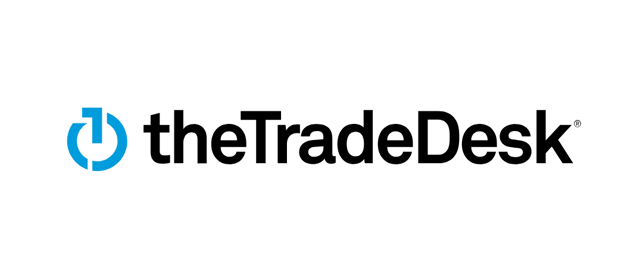The Trade Desk: Effects Of Lower Ad Demand In 2020

On recent earnings calls, Snap (NYSE:SNAP) and Google (NASDAQ:GOOG) (NASDAQ:GOOGL) have confirmed that record ad demand in January and February was met with a significant pullback in March. While many investors are speculating the bounce back in ad tech will happen as quickly as Q3, the respective companies are declining to comment on forward guidance for the rest of the year. This analysis will look at how this will affect The Trade Desk (NASDAQ:TTD).
In my recent analysis, I question if the market has priced in the advertising downturn. Notably, Google has plenty of cash to weather a downturn while Snap has turned towards raising debt. Meanwhile, ad exchanges, such as The Trade Desk, are particularly exposed.
Here are a few reasons why I’m pivoting away from the bull thesis for The Trade Desk in 2020 and possibly into 2021.
The Bull Case for The Trade Desk
To be transparent, I had predicted ad-tech to be one of the best tech trends in 2020. This prediction came true as January and February were record months for ad revenue. However, the story has changed now that large brands are reducing ad spend, or as Google recently said in their earnings report, March “experienced a significant and sudden slowdown in ad revenues.”
The Trade Desk is a “demand-side” or “buy-side’ ad platform which allows advertisers to buy ads in an auction-like format through real-time bidding. This is an automated method for buying and selling inventory that eliminates the need to call up an agency or salespeople to place the ad. The official term for this is programmatic, and the trend is popular in ad-tech, with over 50 demand-side platforms that transact/broker programmatically.
By utilizing machines instead of salespeople, the cost of the ads go down and both parties (supply/publishers and demand/advertisers) prefer programmatic due to fewer middlemen and higher returns.
Strong drivers for The Trade Desk include omnichannel capabilities, which is the ability to buy ads across many channels, such as mobile, video, audio, display, social and native. The universal ad ID is another important differentiation as it offers an anonymized ID that helps track users, target audiences and provide attribution. This feature is rare for a third-party ad network and helps The Trade Desk compete with first-party data companies.
Connected TV ads is the segment with the most growth. Winterberry Group research predicts ad spending on addressable TV and OTT will see a 44% boost in 2020, while linear TV barely has a 1.9% increase.
Another major bull case for The Trade Desk is the trailing financials and growth have been solid. The company released its Q4 and 2019 results on February 27th. The total spend reached a record $3.1 billion in 2019, an increase of 33% year-over-year. Total spend in Q4 was $1 billion.
Revenue grew 39% to $661 million with Q4 revenue growing 35% year-over-year to $215 million. Net income grew 23% YoY to $108.3 million.
Non-GAAP net income grew 42% and the company reported non-GAAP EPS of $3.69 compared to $2.70 for 2018. Quarterly non-GAAP EPS was $1.49 compared to $1.09 in the year-ago quarter.
Looking forward, The Trade Desk is expecting EPS of $0.45 and revenue of $797 million for the year — although this is likely to come under revision due to COVID-19.
Additionally, Gartner has named The Trade Desk a Peer Insights 2020 Customers Choice for Ad Tech.
Why The Trade Desk May Be More Exposed In 2020
The primary reason that The Trade Desk may be more exposed in 2020 is that they are not the publisher of the content where the ads are sold. For instance, Amazon Fire (NASDAQ:AMZN) will fill their inventory first from Amazon’s DSP before pulling from the secondary market (or further down the waterfall). As Amazon will likely illustrate, the only real moat that exists in advertising comes from owning the audience as a publisher — or even better — by owning the device.
There is also little loyalty from advertisers who will quickly switch to the next best-performing programmatic DSP. Switching costs for ad exchanges are very low and this creates fickle behavior in times of distress.
According to Interactive Advertising Bureau (IAB), digital ad spend is down 33% and 24% of advertisers are pausing all ad spend for the rest of the year. For the period between March through June 2020, 70% of buyers adjusted or paused their planned ad spend.
The ad industry is highly competitive, and the track record of third-party ad platforms performing well long term is nearly non-existent following a few years in the limelight (i.e. Millennial Media and Criteo). These ad exchanges saw how fickle advertisers can be when Google and Facebook (NASDAQ:FB) expanded their ad platforms in 2012–2014 and the demand quickly shifted towards working directly with the walled gardens.
If you do not recognize these names, it is because Millennial Media’s stock cratered and was bought out by AOL while Criteo (NASDAQ:CRTO) has also seen a drastically lower stock price over the past few years. In fact, there are very few cases where ad exchanges have done well for a significant period of time due to a lack of intellectual property, which becomes apparent during transformative shifts.
Most importantly, despite The Trade Desk having solid financials and growth, the company’s valuation is outsized. As of now, forward price to sales is at 21. If/when The Trade Desk lowers its revenue guidance, the P/S will be approximately 25 P/S — or the highest in its history. This is despite having the most uncertainty and the highest risk in the company’s history.
Conclusion
The stock market may be rallying off Q1 ad-tech performance, yet the earnings calls have been very clear about the steep drop in ad revenue and uncertainty of when a rebound will occur. Facebook called it “facing a period of unprecedented uncertainty.”
One could argue that valuations are forward-looking to a rebound in 2021. Yet, the majority of ads are closely tied to consumer spending.
Notably, The Trade Desk has been a recommendation of mine throughout the past and up until this month. The company may become a recommendation again in the future.

Check out my premium service “Tech Insider Research”
My weekly PDF reports are 10–20 page deep dives on individual stocks. In the past year, my free analysis predicted Roku’s meteoric rise, Microsoft’s rise, Nvidia’s rise, Uber’s IPO flop, and Zoom’s IPO success. My paid service has done much more.
Last quarter, we provided many entries for cloud stocks at their bottoms and stock tips set up for near-term gains.
Knox Ridley, technical analyst, helps guide entries and exits.
Give your tech portfolio an edge.
